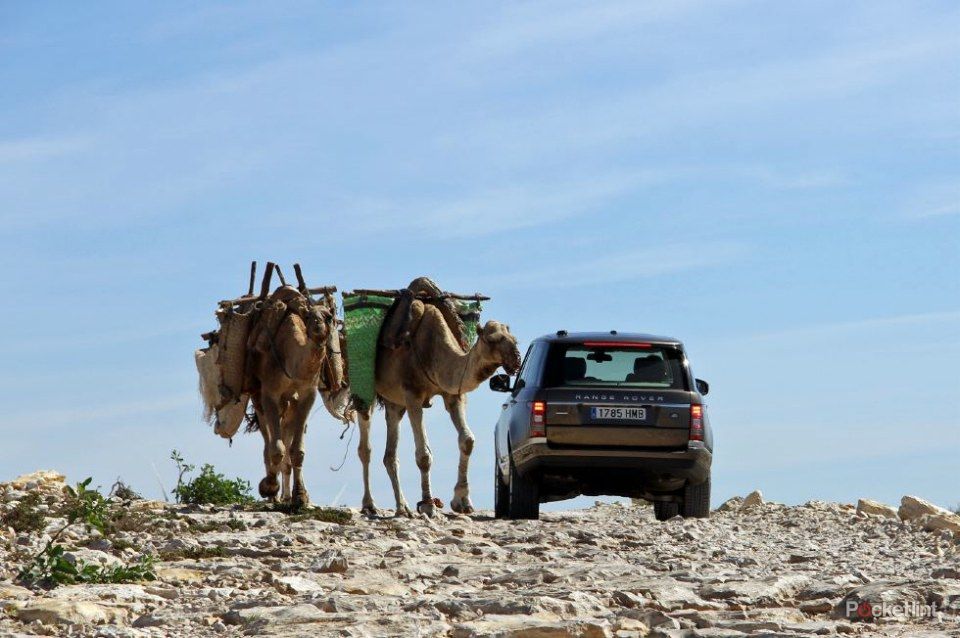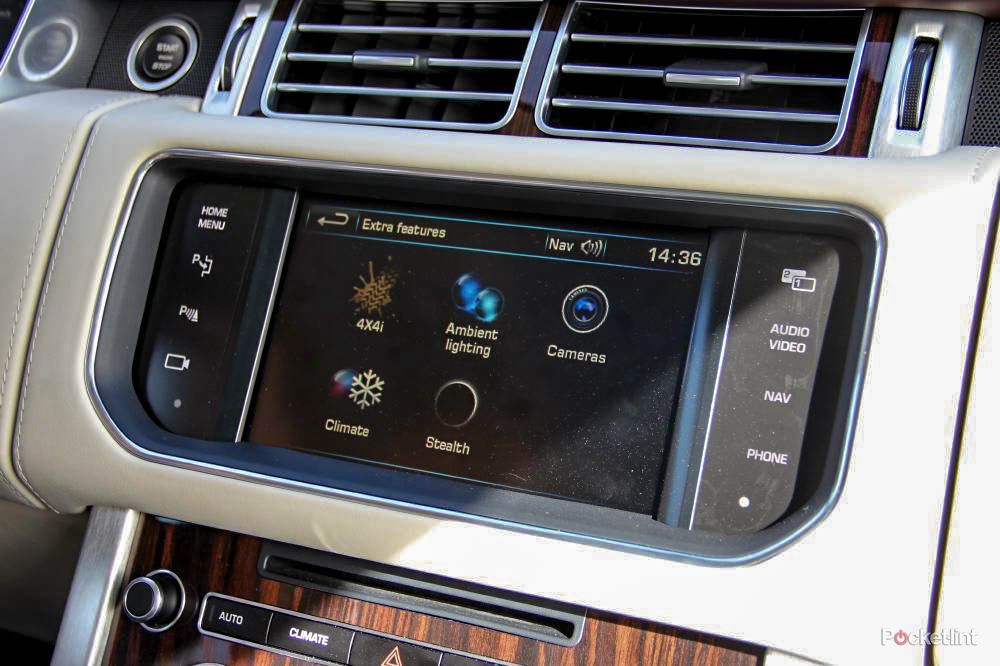The Range Rover arguably invented the sport utility vehicle genre when it was launched in 1970. The brainchild of engineer Spen King, his objective was to build the ultimate go-anywhere vehicle. Later it became the default choice for those looking to pair that ability with unparalleled luxury.
Our quick take

| FOR | AGAINST |
|---|---|
|
|
|
That goal is still clear in the minds of the designers and engineers who have spent the past five years developing the fourth generation of this iconic product. To find out what improvements they had made to the new model, we headed to Morocco to test the new car on an array of different terrains.
A familiar face
The Range Rover has become better with each generation, growing slightly larger in size but also becoming more luxurious. As such, this latest design is a gentle evolution of the characteristic shape. Its clamshell bonnet, tall side glass and generous approach and departure angles are all design hallmarks of the Range Rover, but it has also become more modern and energetic.
It is also more aerodynamic, achieving a .34Cd figure thanks to a steeper windscreen and near-flush glazing, underbody panels and active grille vanes that shut at speed to reduce drag. Lamps that impart a family connection with Range Rover’s most recent offering, the Evoque, also now flank the front and rear ends.
READ: Range Rover Evoque Victoria Beckham edition pictures and hands-on
The power-operated split tailgate – a design feature that’s been integral since the original vehicle – has been re-proportioned to enable better access to the boot, but the lower half is now so small that it seems far less functional than when the Duke of Edinburgh stood on it to watch a horse race back in the Seventies.
Big but not bulky
The previous generation Range Rover was sold in its current form for 10 years, which makes it prehistoric in automotive terms. But the fact that Land Rover has left it alone for a decade – changing and adding a few details to bring it in line with the times – just reinforces its relevance.
For 2012, engineers have designed and developed a new platform and air suspension system and cloaked the vehicle in aluminium body panels to significantly reduce weight. The new £71,000 entry-level model now weighs 420kg less than its forebear, which means it is not only more fuel-efficient but also more sprightly.

The new construction has also enabled engineers to downsize the Range Rover’s engine while still maintaining nearly identical performance figures. The newly developed 3.0-litre turbo-diesel V6 can achieve 62mph from a standstill in 7.9 seconds – one tenth of a second faster than its V8-powered predecessor – while returning 29.8mpg in real world driving conditions.
If you do lot of trailer towing (or can’t think of anything better to do with £7,000) you may want to opt for the 4.4-litre V8’s extra 100Nm of torque. Otherwise, don’t bother. Though the two extra cylinders shave one second off 0-62mph sprints, they also add 200kg to the car’s overall weight, a further detriment to its economy. The new 3.0-litre diesel unit is more than adequate and both engines are mated to a new 8-speed ZF transmission, which provides smooth shifts.
Like the new Jaguars, the new Range Rover now has stop-start engine capabilities and in the city it is disconcerting at first because you'll think you've stalled it, but it's all designed to save you running the engine when you're not going anywhere.
Interior, redefined
Inside, the front seats are comfortable and supportive; retaining the "command" driving position Range Rovers are known for. However, as the beltline is higher you feel more cocooned behind the wheel.
Just as well that the interior is so lavishly appointed. With 50 per cent fewer switches than the outgoing model the cabin is a cleaner, calmer environment, swathed in high-quality materials and detailing. The dashboard is covered in leather, the tactile characteristics of the controls are decidedly upscale, and the metals and wood veneer all combine to exude quality and refinement.

To alleviate any sense of claustrophobia the new Range Rover is also available with a massive panoramic sunroof, which floods the cabin with natural light. It’s quite simply the must-have luxury amenity and beautiful for watching the night sky or bright city lights.

The 42mm longer wheelbase translates into more leg and knee-room in the second row, where the Range Rover can now be specified with a new Executive Class seating option featuring two individual seats and a large centre console rather than a conventional bench that mirrors the Jaguar XJL Ultimate design. The power seats offer an enhanced range of movement for the rear seatbacks and cushion, and can recline up to nine degrees (two more than the standard seats). That said, the rear seating isn't perhaps as comfortable as you might expect: it's a firm experience rather than one to wallow in.
Tech-mate
As expected, the Range Rover comes fitted with a range of technology to make life on board more plush. Everything is contained within a central touchscreen interface, which sometimes means navigating through a labyrinth of menus.
To simplify this process, the 8-inch monitor is flanked by shortcuts on either side of the display to access commonly used features. The screen offers everything from parking assistance and vehicle guidance via five camera screens, to mood lighting, seat massaging and climate control, and a dual view system, which displays vital information to the driver while the front seat passenger watches TV or a DVD. You can also specify twin 8-inch monitors in the front seat headrests for rear passengers.

The 12.3-inch TFT gauge cluster is familiar to anyone who’s spent some time in the outgoing model, but it now includes a central display, which adds navigation and other ancillary information. It also features a shadowing mode, which highlights the speed and rev numbers while keeping the others dim, making them easier to spot quickly.

USB ports, 12v and audio connections reside inside the deep, refrigerated centre console, which proved to be a great space to keep 500ml drinks bottles cool while travelling over sand dunes and through the desolate Moroccan landscape. The Executive Class console also includes additional USB ports at the rear.
READ: Land Rover Discovery 4 SDV6 HSE review
The icing on the cake is the Meridian sound system, of which there are three available. Our test car was fitted with the top-of-the-line 1700W Signature Reference 3D surround sound system with 29 speakers, including a subwoofer. The system features a series of amplifiers and digital processing technology to optimise sound quality (especially bass) – it has to be the best car audio system we’ve ever experienced.
We don’t need roads
If that term hadn’t been coined by Doc Brown in 1985 and affiliated with a time travelling DeLorean, Range Rover would have probably owned the copyright.
As well-heeled as this car is on-road, it’s the technological advancements achieved in its second-generation All Terrain Response system that make it even more of a compelling offering off-road.

During our time with the car in Morocco we had the opportunity to use three of the five off-road settings – General; Grass/Gravel/Snow; Mud/Ruts; Sand; and Rock Crawl – to adjust the vehicle’s height, throttle sensitivity and wheel slip. In the Automatic mode, the system gathers information from a series of sensors and selects the best setting – or combination thereof – in less than a second. It was a very intensive off-road program of which the car sailed through every inch.
The Range Rover is without a doubt one of the most luxurious and refined vehicles in the world today. That it can also climb up a mountain, navigate through rivers and across sand dunes just makes it all the more amazing.
For this latest model, Land Rover has taken the iconic SUV to new levels. It is well and truly a remarkable vehicle.
